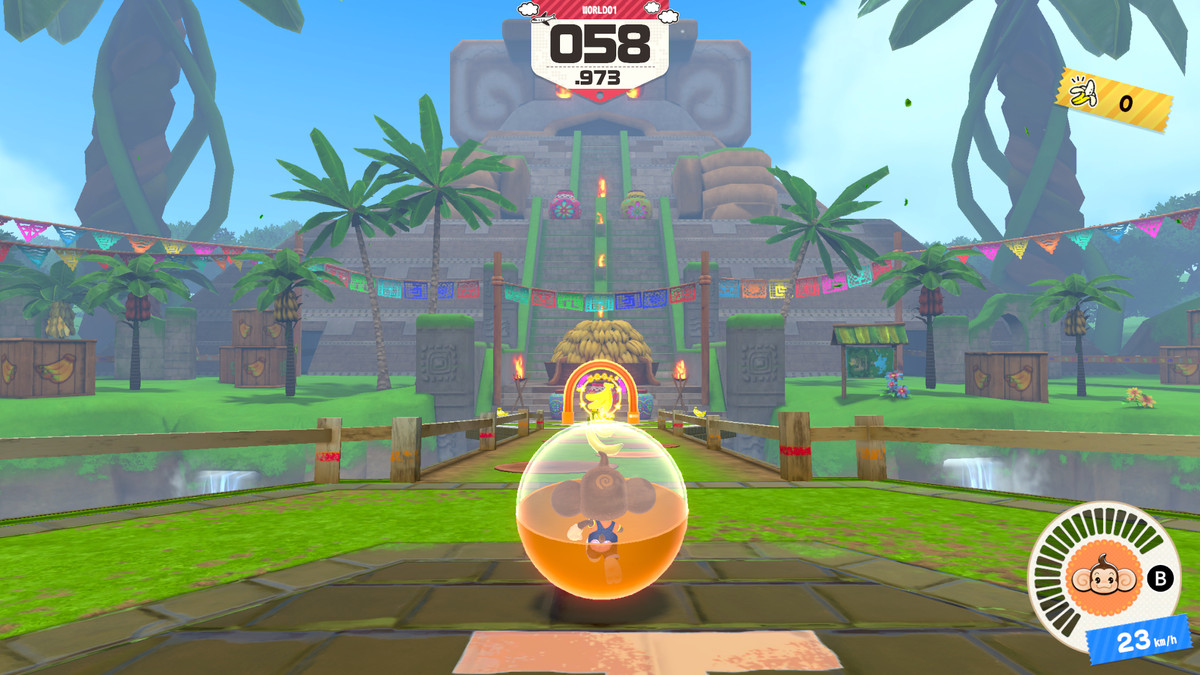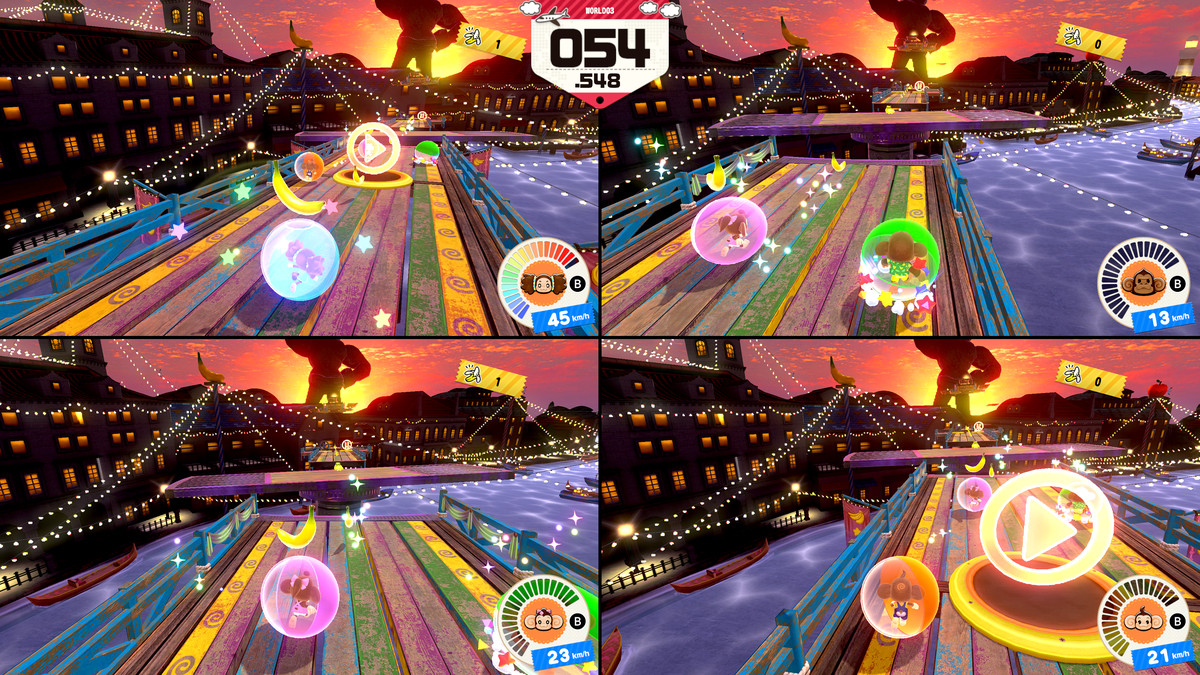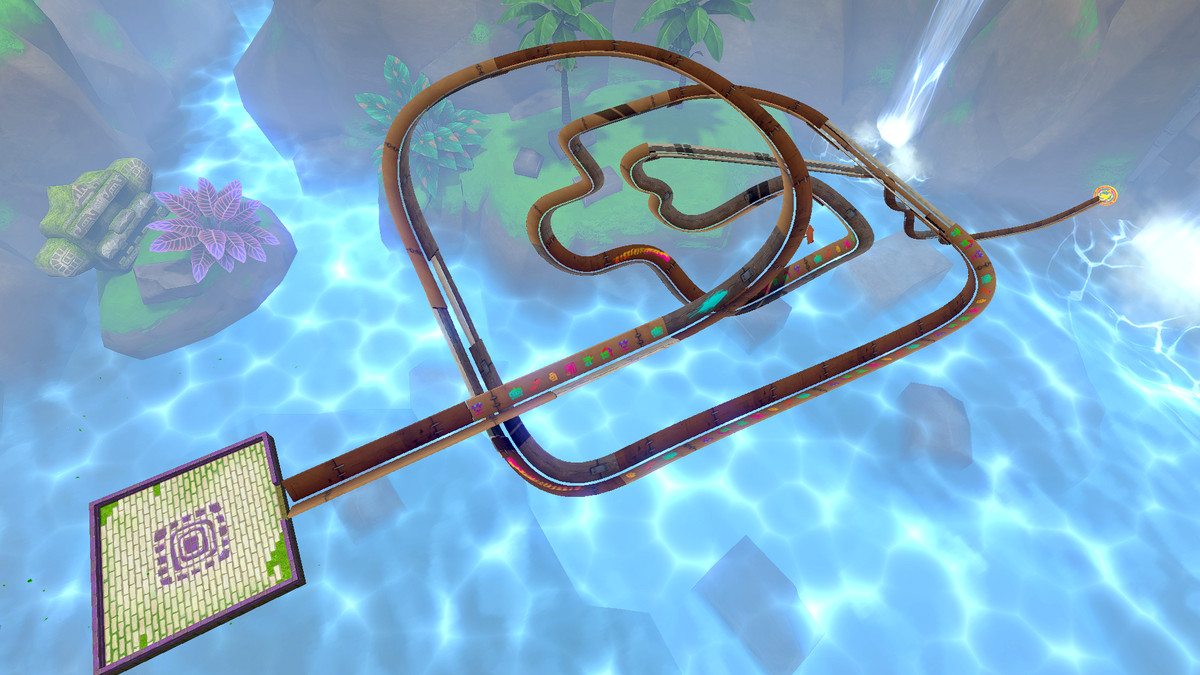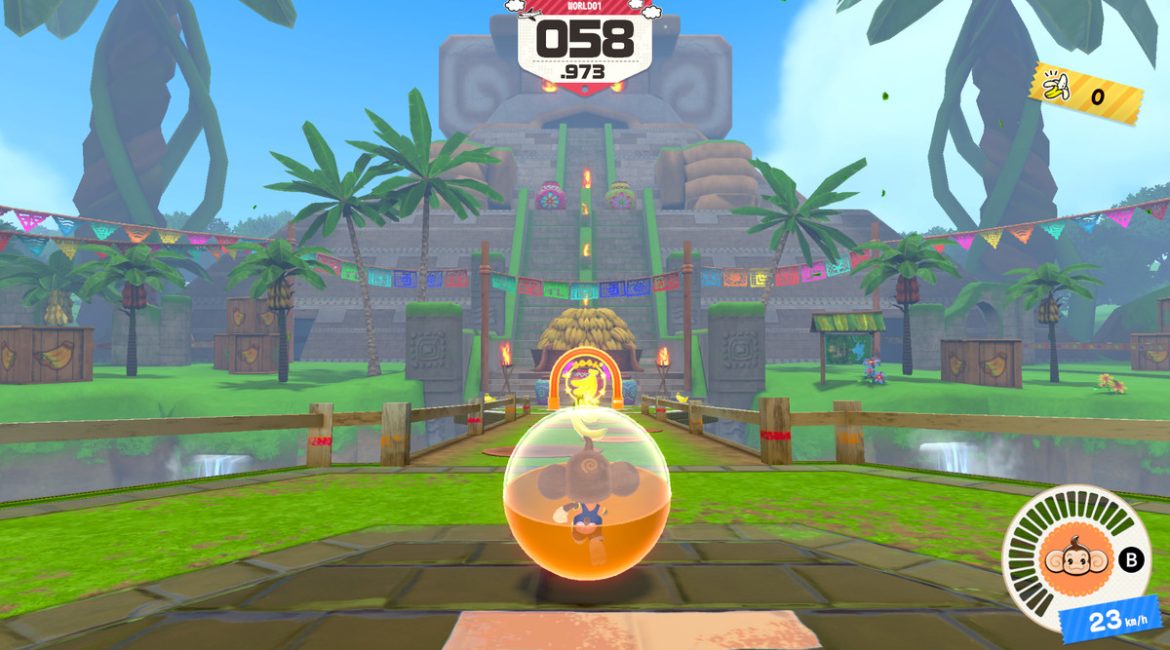There’s an arcade-themed bar near where I live in south London that has an original Monkey Ball cabinet. This classic 2001 Sega cab, which became a Nintendo GameCube launch game called Super Monkey Ball, features a single banana-shaped joystick before an angled screen. Players use the banana to guide AiAi, a monkey in a ball, to the end of tricky platforming stages. It’s goofy, minimalist, and brilliant — even 23 years ago, it felt like a time warp back to the surreal innocence of early video games.
I played the shit out of Super Monkey Ball on the GameCube; it’s one of my favorite games ever. When I spotted the old cabinet in the bar, I had to try it. I didn’t do that well — the banana joystick had seen better days and was a bit slack, with a roomy dead zone. (Also, I was a few cocktails deep into my evening by that point.) But the game itself folded the preceding two decades down to nothing. The feel of the ball physics, the routes through the stages, the shortcuts with their risky ricochets and heart-in-mouth tumbles — all of it was still there, programmed into my muscle memory, ready and waiting to be revived by an instantly recognizable blast of cheery techno music.
Monkey Ball went on to become a modest franchise for Sega, fueled in part by the GameCube game’s addition of a suite of inventive, comical party games (Monkey Target, Monkey Bowling, Monkey Golf, and more). But the perfection of the 2001 game’s original set of single-player stages turned out to be tough for the developers to follow. It’s difficult to elaborate meaningfully on something so simple and pure; every subsequent release ended up diluting it.

To make matters worse for Monkey Ball, the Sega team that made these games soon had another hit franchise on its hands, and it couldn’t have been more different: Yakuza, now called Like a Dragon. The studio that had once been called Amusement Vision, then CS1 R&D, eventually renamed itself Ryu Ga Gotoku Studio after the Japanese name for its series of sprawling gangster melodramas.
RGG Studio didn’t have much time left for AiAi and his friends, and the series fell fallow for a while in the 2010s. But after remakes of the first three games and Super Monkey Ball Banana Blitz revived interest, RGG Studio decided to have another go. The result is Super Monkey Ball Banana Rumble: a new release for Nintendo Switch, the first original Monkey Ball title in a decade, and a take on the series that’s simultaneously fresh and deeply nostalgic.
The basics haven’t changed: Get to the goal before the time runs out and pick up bananas on the way. As ever, the trick to Super Monkey Ball is understanding that you’re really tilting the whole level rather than controlling the ball. Banana Rumble is super smooth (the adventure mode runs at a flawless 60 frames per second) and instinctive to play. The levels are pretty easy in the early part of the game, with lots of broad, safe platforms to roll along, and they tend toward interactive elements and away from the extremely tough balancing challenges of the original.

But RGG Studio has layered the difficulty with meta-challenges for each level — target completion time (usually just a few seconds), total bananas collected, and a golden banana to aim for — as well as a new spin dash move that can be charged up to give your simian orb an extra speed boost. Pressing a button in Monkey Ball? Sacrilege! …Although, just think of the shortcut opportunities it opens up.
“We looked to lower the difficulty level on the early worlds of Adventure Mode, but the new spin dash technique broadened the possibilities of how users can beat any given level and made each stage worth playing, even for advanced players,” director Daisuke Takahata told Polygon over email. Takahata leads a team at RGG that includes several Monkey Ball veterans, including Yukio Oda, a level designer who’s worked on many games in the series, all the way back to the original.
“The Super Monkey Ball series uses a unique physics system that allows for the creation of essentially any type of level, and we are proud to say this approach is a wonderful way to stimulate the imagination of level designers,” Oda explained, also over email. “Even after looking back over 20 years, there are many levels that I think are very original. I think that the originality of the first Super Monkey Ball is the DNA of the series, so I made Banana Rumble keeping all of this in mind while also trying to adapt it to the changing times and the needs of the players.”

In their answers, Takahata and Oda made several references to responding to shifting tastes among players, and if Banana Rumble is more welcoming and flexible than Monkey Ball games used to be, that’s probably why. But Oda pointed out that players have been surprising the developers since day one. “I have been involved in the series for many years, and I feel that more than half of the shortcuts found so far were not intended at all by the level designer. We are often surprised to learn of these unexpected shortcuts through various online videos,” he said.
Some innovations don’t have the design impact you would expect, however. Banana Rumble supports four-player co-op in the adventure mode — essentially allowing four players to pool their efforts to beat a stage simultaneously — but Takahata says this didn’t really influence the level design at all. There’s also a 16-player battle mode, but its slow, choppy frame rate feels anathema to Monkey Ball play. This is one game series for which a solid 60 fps needs to be a baseline requirement.
One of my greatest gaming memories is defeating the “0.1 string” on the Advanced 11 stage of the original Super Monkey Ball. This simple but devious level is shaped like a guitar, presenting four “strings” — straight routes to the goal — of increasing narrowness. The 0.1 string is a tenth as wide as your monkey’s ball, and for a long time, it seemed impossible to me. But with patient coaching from a friend, I made it, and realized it had been quite simple all along; it wasn’t a test of skill, but a test of nerve.

“If you still remember that stage today, it means that I was able to create a memorable level,” Oda said. “If I were to comment on that stage in particular, I would say the theme would be ‘courage and confidence,’ along with ‘challenging yourself and the sense of accomplishment that follows.’ When designing the most difficult stages, it is also important that it makes users think, ‘I almost beat it!’ and ‘So close!’ But if a stage is just too difficult, and you have no idea how to clear it, or if you fall down in an unreasonable way, it wouldn’t make you want to try again, right?”
It’s fun to think of Oda, who designed those brilliant, maddening stages back in 2001, returning to continue his life’s work, but surrounded by other developers making the street-brawling combat, loquacious cutscenes, and bizarro minigames of Like a Dragon: Infinite Wealth. (Takahata said the Like a Dragon team helped playtest Banana Rumble, and their perspective helped with “the overall quality of the level design.”) The studio that made Banana Rumble has changed a lot over the last two decades, but the simple joy of the Monkey Ball series remains. It’s refreshed, even; Banana Rumble is the first new entry in a long while that feels more like a love letter than an obligation. Oda said one thing — perhaps the most important thing — about making Monkey Ball hasn’t changed at all over the last 20 years: “The fun we had while creating it has not changed in the slightest. :)”
Super Monkey Ball Banana Rumble was released June 25 on Nintendo Switch. The game was played on Nintendo Switch using a pre-release download code provided by Nintendo. Vox Media has affiliate partnerships. These do not influence editorial content, though Vox Media may earn commissions for products purchased via affiliate links. You can find additional information about Polygon’s ethics policy here.
